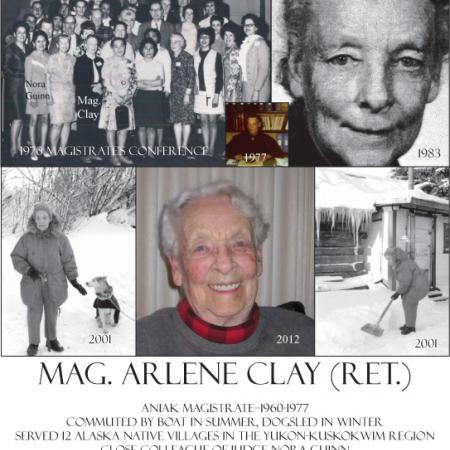|
Amateur Radio Links
|
|
|
Ham Operators now Silent Key
I'll definitely see in heaven.
How I know?
|
| Under Construction |
| Call sign / Name |
Their story. |
Photo (click for further info) |
| AL4O
Larry Hodges
|
In addition to ham radio, Larry was a woodworker who loved to turn pieces of wood on his lathe. He told me that his life was once like a piece of ugly gnarled wood until Jesus came into his life; when that happened Christ put him on God's heavenly lathe and turned and chipped away all the twisted old dirty wood to make him into a beautiful container for the Holy Spirit to live in.
After Larry told me this story, he brought me next door to a friend's office where this beautiful wooden vessel was sitting on the customer counter. Larry showed me how the vessel was made of three different kinds of wood; each kind of wood represented the three characteristics of God which are the Father, the Son and the Holy Spirit. Then Larry opened the top and inside was a little scroll of paper with the above story written on it.
|
 |
| KL1HY
Teddy Walden
|
A ham who loved Jesus with all his heart and always passed along the Lord's blessing at the end of each QSO. One of the most outstanding characteristics of Teddy was his unabashed and very upfront defense of the Lord's name; Teddy wouldn't hesitate to openly rebuke older longer licensed ham operators who would use the Lord's name in vain on the air. His presence on the local 75 meter Alaskan Snipers Net is definitely missed. |
 |
| KL7OT
Arlene “Buddy” Clay
|
Arlene “Buddy” Clay, KL7OT, died on February 11. She was 103. An ARRL member, Clay was inducted into the Alaska Women’s Hall of Fame in 2015 for her work in rural justice administration among the Yup’ik people. She became a ham in 1948 and began calling the Thursday night Snipers Net for the Matanuska Amateur Radio Association, a duty she continued from her home at the Primrose retirement community until she died of a stroke.
In 1960, after having worked for years with her husband Earl, KL7EM, as an air traffic controller, she began a new career as a magistrate for the Alaska Court System, becoming responsible for 12 villages along the Kuskokwim, Yukon, and Iditarod rivers. She traveled from village to village by boat in the summer and by dog sled in the winter. In all, “Buddy” Clay spent nearly 70 years living in Alaska’s wilderness. She was profiled in the August 2013 issue of QST in the article "A Radio Voice in the Wilderness" by Brenda Plessinger, AL7LX.
|
 |
|
|
|
|
KiwiSDR

|
VE6SLP
|
VA6DX
|
VE7AV
|
W6REK
|
|
WA7HL
|
NM7A
|
KJ6EI/VE7
|
KTRJ-LP
|
N0EMP
ccz
|
KK7DV
ccz
|
AI6VN/KH6
|
WL7NO
|
KK6PR
|
|
KE6GG
|
KPH
|
|
|
|
|
|
|
|
|
20m - 160m
|
Corinne, Utah
6m - 31m
|
Corinne, Utah
6m - 31m
|
Corinne, Utah
6m - 31m
|
Corinne, Utah
10m - 40m (ex 12m)
|
|
80m - 40m
|
80m - 40m
|
|
20m - 160m
|
10m - 160m
|
 |

|
| Full Wave Loop Calculator |
The Silky product is copper clad steel (40%) that has 19 strands and is tinned.
If you have ever worked with Copper Clad antenna wire (especially SOLID wire) - you are very aware of the "memory effect" with copper-clad wire and the problems with "kinks" or some difficulty with soldering. This was my Novice class experience back in early 1970s.
The "typical" STRANDED Copper Clad antenna wire is 7 strands - and is an improvement over solid wire.
Silky uses 19 strands --- so it is a bit more flexible and does not have the "memory effects" of solid wire.
Silky is also a "tinned" antenna wire -- so that soldering is MUCH EASIER.
From my experiences with "FLEXWEAVE" I have only a few comments about the SILKY product:
+ You are dealing with 19 strand wire - so you need to check the breaking strength for your specific application (e.g. dipole, quad, inverted V, wire under tension).
+ Look carefully at the versions available on the web site (AWG; break strength (in lbs.); bare or coated). Select a few possible candidates.
+ Then, MATCH your application (and antenna environment) to your specific wire selection.
For example: I would not use bare stranded wire in a coastal area (salt corrosion) when a "coated" version is available.
|
|

Rethinking Dynamics of Electromagnetic Energy
|
|

|
Flight crew member - radioman.
First important lesson, reel in weighted trailing wire well before touch and goes.
|
|
|
14.290 MHz @ 16:30 - 17:30 UT Daily
7.181 MHz @ 17:30 UT Tuesday
7.278 MHz @ 03:00 UT Tuesday (US)
|
|
|
|